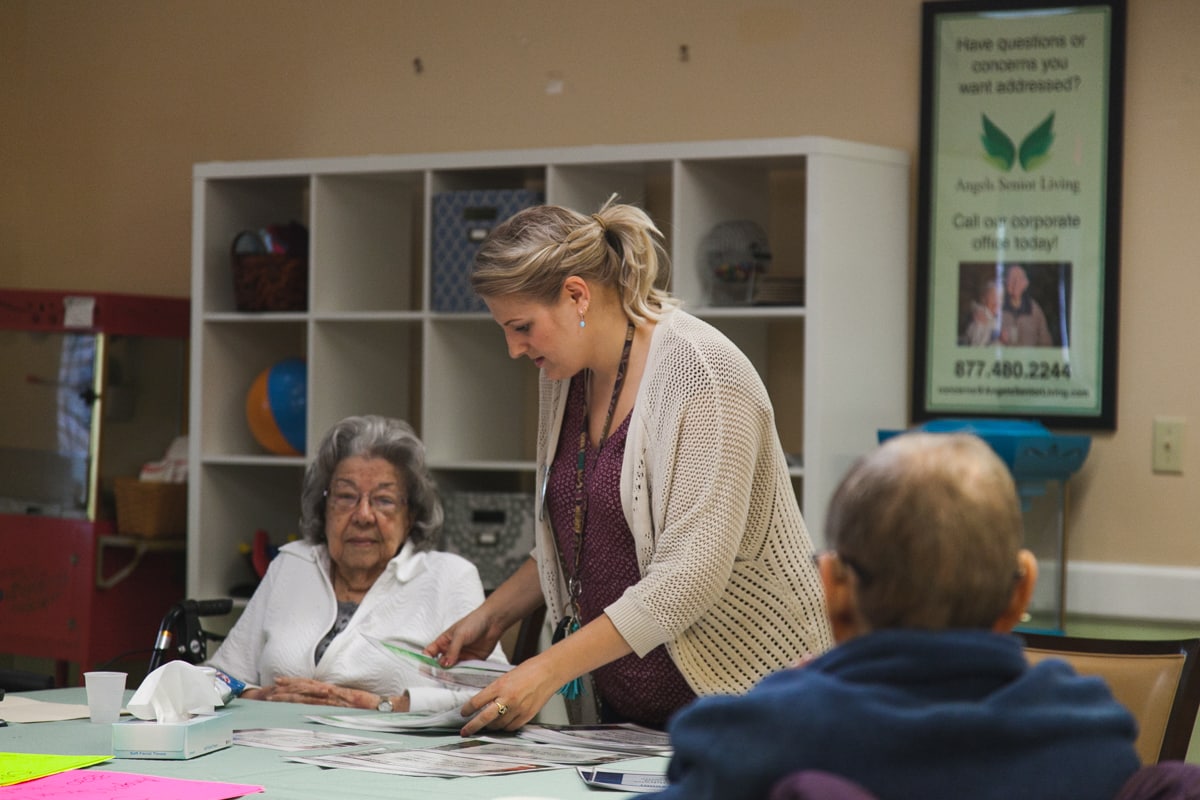How do you know it’s the right time for you or your loved one to enter assisted living? There are a few different signs that reliably indicate a senior’s abilities, and the type of care they may need. Many people can make it their whole lives without assisted living, but eventually — and unfortunately — the mileage catches up to everyone, and you may need help
What Are Typical Signs of Aging? Do People Who Have Them Need Assisted Living?
Certain aspects of aging are completely normal. You should anticipate somewhat slower cognitive function, decreased mobility, and an increased reliance on others to perform more intense activities like yard work. These changes can certainly affect you or your loved one’s quality of life but aren’t cause for undue concern. You may need more help, but you don’t need assisted living. This could change in the future, though.
There are several common signs a senior’s aging is going “badly” and may require family or medical intervention. These include forgetting about bills or medication, dirty clothing, poor hygiene, depression, weight loss, unexplained bruises, injury, or broken household items, among others. Depending on the severity of these issues, you can choose from a few different options. Sometimes, parents move into their children’s homes to receive better care and companionship. Often, private duty nurses or certified nursing assistants (CNAs) can help seniors manage in their own homes. Doctors may also recommend assisted living to address particular health problems, or seniors come to that conclusion themselves.
With these typical signs of aging in mind, let’s focus on the changes that lead most seniors to consider assisted living. These are your activities of daily living.
What Are Some Typical Characteristics of Assisted Living Facility Residents?
Assisted living residents are most often seniors who can no longer live on their own. Each day, every person performs their “activities of daily living”, easily summed up as:
- Eating,
- Personal Hygiene
- Dressing,
- Functional Mobility (Movement), and
- Toileting
This is a simple way of looking at some very complex ideas. Eating naturally includes cooking and personal hygiene addresses showering, bathing, and the ability to groom oneself. Dressing addresses one’s ability to choose and put on clothing. Functional mobility, also known as ambulating, Toileting also covers continence, or the ability to control one’s bladder and bowel functions. Toileting may appear as its own activity of daily living or ADL.
But ADLs are a measure of one’s abilities, not a judgment of who actually makes use of assisted living. What about some of the demographics of people entering assisted living? Check them out below.
What’s the Average Age of Residents Entering Assisted Living Facilities?
The average age of residents in Angels Senior Living facilities is 81 years. Over 82 percent of “residential care community” users were 75 or older according to the National Center for Health Statistics’ 2019 report on Long-term Care Providers and Services Users in the United States. However, the majority of users are in their eighties.
How Many Americans Live In Assisted Living Facilities?
Roughly one million Americans, or 2 percent of adults over the age of 65, live in assisted living. Another 1.5 or so million Americans live in nursing homes, which provide higher levels of care than assisted living facilities. You can find more about the difference between nursing homes, or skilled nursing facilities (SNFs), and assisted living facilities (ALFs) here.
With roughly 20 percent of the population over the age of 65, Florida is home to roughly 3.2 million seniors and growing. Using the math above, we can guess around 65,000 Floridians take advantage of assisted living. Florida Health Finder data indicates there are 109,057 total beds across 3,094 communities in the state, offering a very robust system for Floridian seniors.
What is the Health of Assisted Living Residents Like?
Generally speaking, assisted living residents are in worse health than the elderly population at large.
75 percent of senior living residents have at least two chronic conditions, according to the National Council on Aging. The most common conditions for residential care communities are hypertension and arthritis, followed closely by Alzheimer’s, according to the same NCHS report.
A variety of other conditions typical of many Americans, including diabetes and depression, are also common. Of all these conditions, Alzheimer’s and dementia usually gets the most attention from assisted living facilities.
How Many Assisted Living Residents Suffer from Alzheimer’s or Dementia?
The Alzheimer’s Association reports that up to 40% of assisted living residents have Alzheimer’s or another form of dementia. Many assisted living communities offer specialized memory care units for the sizable population of Americans who suffer from memory loss as they age.
Sometimes, needs go beyond both typical aging and the need for assisted living. Memory loss as a result of dementia or Alzheimer’s is a devastating and unfortunate reality for many Americans, even for some who aren’t elderly. With this in mind, many assisted living facilities specialize in memory care units to provide improved care and engagement for those with memory loss.
Similar to signs a senior might need assisted living, there are some key indicators memory care might be a good option for your loved one.
What Are the Signs of Alzheimer’s or Dementia? How Will I Know a Loved One Needs Assisted Living?
Alzheimer’s manifests both in a senior’s physical condition and in their overall behavior. Typical physical signs of Alzheimer’s or dementia include:
- Difficulty with common tasks,
- Repetitive behaviors,
- Loss of fine motor skills, including shorter steps,
- Wandering,
- Increased naptime and insomnia, and
- Poor hygiene
Stay vigilant as a senior or their loved ones and identify these kinds of changes. It’s important to understand these changes and keep an open, respectful dialogue between seniors and family members or caregivers.
Even with that understanding, many seniors hide basic problems associated with Alzheimer’s by keeping their issues a secret. Often, seniors may even deny their memory loss or coordination issues when loved ones suggest they’re happening. This isn’t unusual, but it is a cause for concern.
Hopefully, you’ve gotten some clarity on the signs a senior may need assisted living, as well as more insight into the demographics of the typical assisted living population. Feel free to reach out to us by giving us a call or filling out a contact form.






